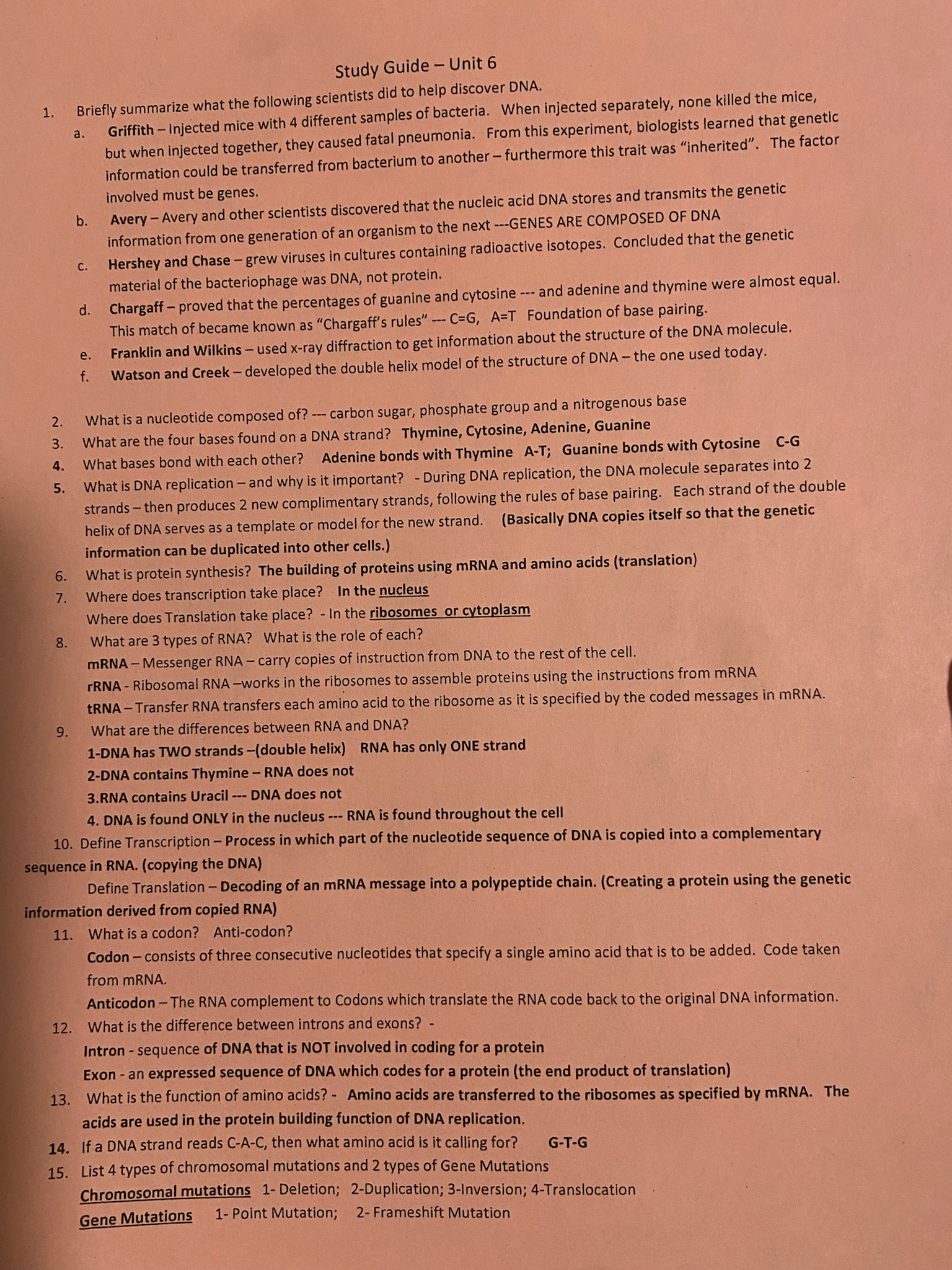Briefly summarize what the following scientists did to help discover DNA: Griffith, Avery, Hershey and Chase, Chargaff, Franklin and Wilkins, Watson and Creek. What is a nucleotide... Briefly summarize what the following scientists did to help discover DNA: Griffith, Avery, Hershey and Chase, Chargaff, Franklin and Wilkins, Watson and Creek. What is a nucleotide composed of? What are the four bases found on a DNA strand? What bases bond with each other? What is DNA replication and why is it important? What is protein synthesis? What are 3 types of RNA and what is the role of each? What are the differences between RNA and DNA? Define Transcription and Translation. What is a codon? What is the difference between introns and exons? What is a gene mutation and what are the types?

Understand the Problem
The question is asking to summarize the contributions of various scientists to the discovery of DNA, as well as to explain fundamental concepts related to DNA structure and function, such as its composition, replication, protein synthesis, and mutations.
Answer
Griffith, Avery, Hershey and Chase, Chargaff, Franklin and Wilkins, Watson and Crick contributed to DNA discovery; nucleotides have a sugar, phosphate, and base. A:T, C:G pair. DNA replication copies DNA. RNA types: mRNA, tRNA, rRNA assist protein synthesis. Transcription and translation involve DNA and RNA. Codons are triplet bases. Introns and exons differ in coding.
Griffith discovered bacterial transformation. Avery showed that DNA is the transforming factor. Hershey and Chase confirmed DNA is genetic material. Chargaff found base pairing rules. Franklin and Wilkins used X-ray crystallography for DNA structure. Watson and Crick proposed the double helix model. DNA replication creates identical DNA strands for cell division. RNA differs from DNA in having ribose sugar and uracil instead of thymine. Transcription copies DNA to RNA; translation decodes RNA to form proteins. A codon is a sequence of three nucleotides in mRNA. Introns are non-coding sequences; exons code for proteins. Gene mutations include point and frameshift mutations.
Answer for screen readers
Griffith discovered bacterial transformation. Avery showed that DNA is the transforming factor. Hershey and Chase confirmed DNA is genetic material. Chargaff found base pairing rules. Franklin and Wilkins used X-ray crystallography for DNA structure. Watson and Crick proposed the double helix model. DNA replication creates identical DNA strands for cell division. RNA differs from DNA in having ribose sugar and uracil instead of thymine. Transcription copies DNA to RNA; translation decodes RNA to form proteins. A codon is a sequence of three nucleotides in mRNA. Introns are non-coding sequences; exons code for proteins. Gene mutations include point and frameshift mutations.
More Information
These scientists' discoveries were fundamental to understanding DNA's role in genetics and molecular biology. The knowledge of DNA structure and function is critical in fields like medicine, forensics, and biotechnology.
Tips
A common mistake is confusing the roles of different types of RNA during protein synthesis. Remember that mRNA carries the code from DNA, tRNA brings amino acids, and rRNA forms the core of ribosome’s structure.
Sources
- Discovery of the structure of DNA (article) - Khan Academy - khanacademy.org
- DNA Structure and Replication | CK-12 Foundation - ck12.org
- Francis Crick, Rosalind Franklin, James Watson, and Maurice Wilkins - sciencehistory.org
AI-generated content may contain errors. Please verify critical information